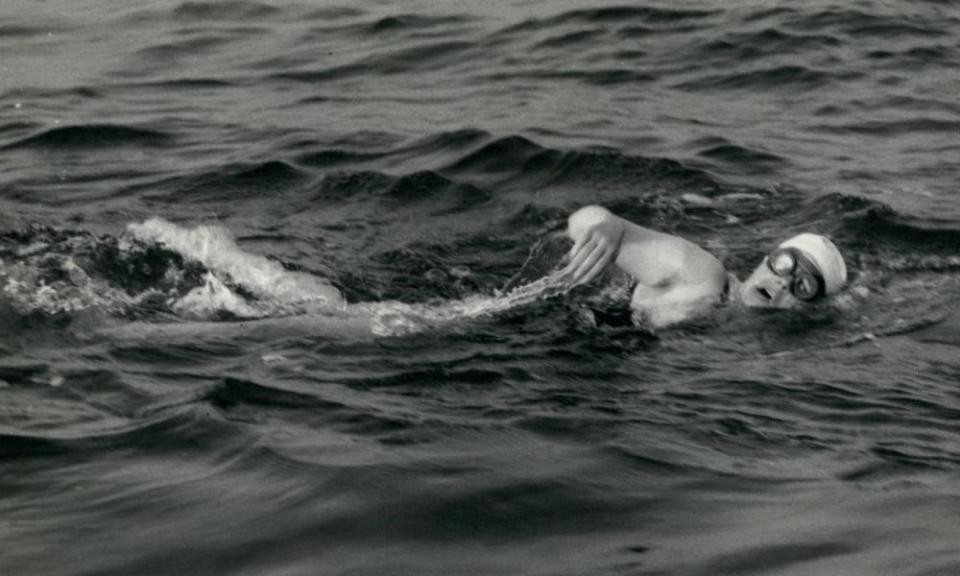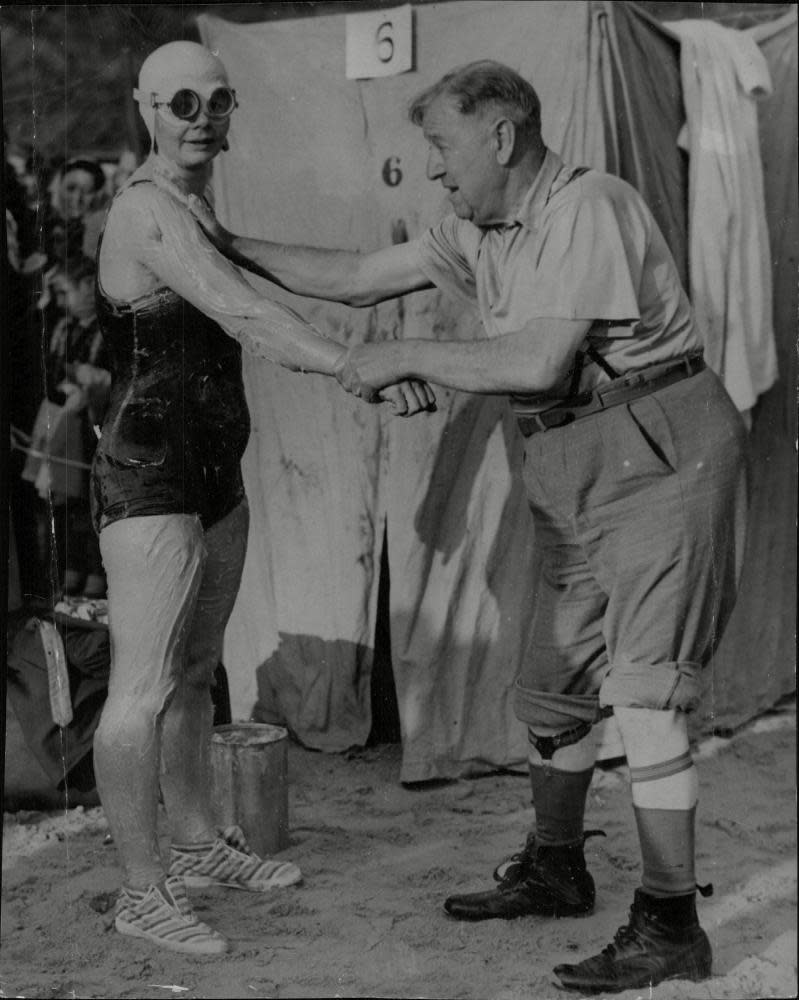Brenda Fisher obituary

Brenda Fisher, who has died aged 95, was a world record-breaking English Channel swimmer. She achieved global fame during the 1950s for her long-distance challenges, becoming the first woman home in two cross-Channel races, and breaking records for the 29-mile River Nile race and the 32-mile Lake Ontario race. She was only the third person to complete the latter route.
In later years, she taught hundreds of children to swim in her hometown of Grimsby, Lincolnshire. The publication of Brenda’s biography in 2015 saw a resurgence in interest in her achievements, and three years later she was awarded a British Empire Medal. Ever modest, Brenda said: “I enjoyed myself, but other people have done more important things.”
She was born in the family home in Grimsby where she would live for her entire life, the youngest daughter of Enid (nee Winship) and Albert Fisher, a trawler skipper. Aged nine, Brenda suffered from such severe sunstroke that it paralysed one side of her body. Determined not to let it affect her, she learned to swim – taking up a sport her older brother, Buster, and sister, Jessie, were hooked on.

Under their coach, Herbert McNally – known as Mr Mac, and himself a champion swimmer – Brenda initially trained in speed, not distance. Private lessons cost one guinea. “He was very strict,” she recalled. “I wasn’t allowed to go to the cinema; I had to train.”
This involved spending hours in the cold water of Grimsby docks. It was when Buster, at 16, and Jessie, 15, swam the River Humber in 1938 that breaking records entered the Fishers’ lives; Buster became the youngest male to complete the crossing and Jessie the first female. Soon afterwards, Brenda began distance training.
She took part in more races, and won the 1948 Morecambe Bay challenge, but a family tragedy focused her sporting prowess. Buster and Jessie had made a pact to take on “the big one” – the Channel – but the second world war intervened and, Buster, aged 21 and in the RAF, was shot down and killed in action. His sisters continued swimming in his honour and in 1951 were both accepted for the Channel race.
They trained hard, but when Jessie developed appendicitis she had to withdraw. Brenda, now 24 years old, was to go it alone. At 7.29am on 17 August that year, she entered the water at Cap Gris-Nez, France. “I was fed hourly on sugar and chocolate – a welcome break in the steady grind of crawl strokes,” she recalled. “I was never told of the progress I was making; all I wanted was to get across.”
With a stroke count of 25 per minute, increasing to 30 nearing Dover, Brenda clambered ashore, the first woman home, in 12 hours 42 minutes – breaking the existing world record by 32 minutes. Her first words were: “Will someone tell my dad?”
A publicity whirlwind followed for the new queen of the Channel. She took to the stage at that year’s Royal Command Performance, and was named the sportswoman of the year. Back in Grimsby, she was given the highest possible honour – a tug was named after her.
In 1954, Brenda became the second woman to swim the Channel twice, home in just under 15 hours, and the first woman ashore. Her celebrity status was set, the media buzzed with coverage of her achievement – and there was more to come.
In April 1956, she was the fastest woman home in that year’s River Nile race and placed fourth overall. Four months later, she was on the front pages again, having completed a solo swim of Lake Ontario, Canada, in 18 hours 51 minutes, breaking the existing record by more than two hours. “I was determined to conquer it,” she said. “I thought ‘I’ll show the world what Britain is made of.’”
By 1957, having become the face of Quaker Oats and met Elvis Presley during a television recording, Brenda still held the Channel record and wanted to try it again. After nine hours in the water and just five miles from Dover, she was forced to withdraw with seasickness – and her record was beaten. Aged 31, she bowed out of competitive swimming: “I knew I’d had enough.”
On leaving Nunsthorpe primary school aged 14, Brenda had trained as a shorthand typist and worked for a while in the offices of fish merchant and football administrator Arthur Drewry on Grimsby docks, and later for the Ross food group. Although there were prizes on offer for competitive swimming, most of the money was swallowed up in training and travel; at one point a group of local businessmen set up a fund to cover the cost of her expenses and kit such as lanolin.
When she married the professional footballer Pat Johnston in 1954, the couple purchased a sweetshop in Grimsby, and ran it together in between their sporting commitments. Through local clubs and schools, Brenda also spent years coaching youngsters and advising long-distance swimmers, as an advocate for the sport. The Channel Swimming Association described her as “one of the true open-water pioneer swimmers of the 20th century”.
Brenda’s name remained well known in Grimsby, and when I interviewed her for the Grimsby Telegraph on the 60th anniversary of her Channel swim, we got talking about collaborating on a biography, and became firm friends during the research and writing of Blonde In Deep Water. With renewed interest in her career, a blue heritage plaque was erected within sight of the dock she had trained in.
Pat died in 1971 and Jessie in 1994. Brenda is survived by a nephew and niece.
• Brenda Fisher, long-distance swimmer, born 9 June 1927; died 2 August 2022

 Yahoo News
Yahoo News 